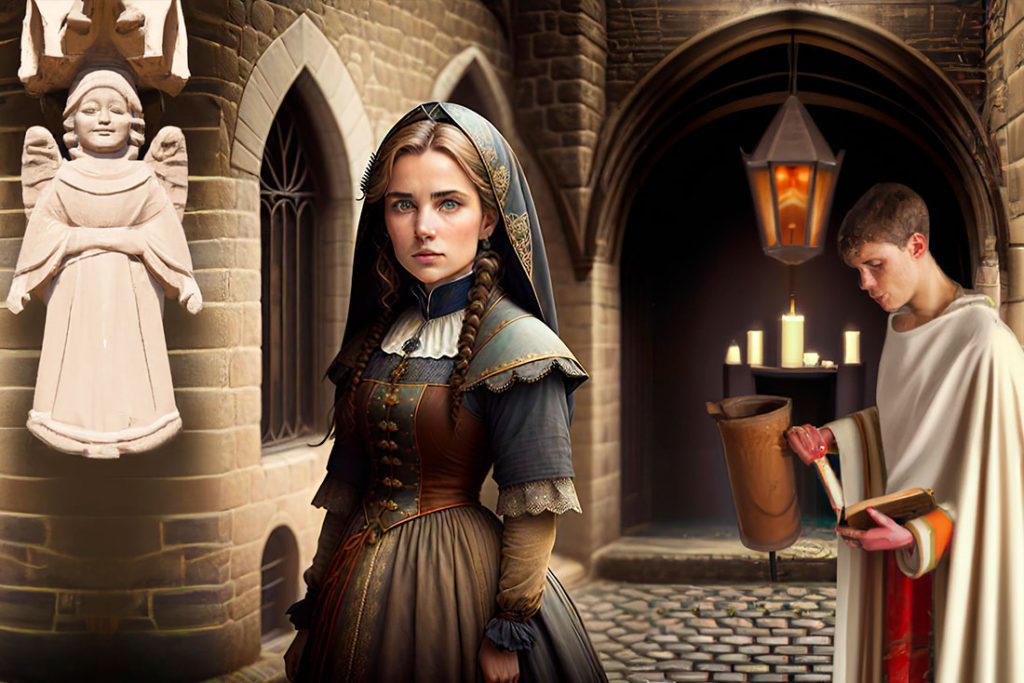Medieval Innovations in Cosmetology: Hairstyles, Hair Dyeing Techniques, and Essential Oils
This comprehensive article explores the significant developments in cosmetology during the Middle Ages, from 476 CE to 1450 CE. The piece details how the era was marked by the adoption of elaborate hairstyles and headwear among wealthy women, and the shift in men’s hair trends from short, forward-combed styles to longer hair with a middle part. The article also discusses innovative hair dyeing techniques of the time, such as the use of mixtures of black sulfur, honey, and alum for lightening hair, or a paste made from walnut and chestnut for darkening it. Furthermore, the article highlights a significant breakthrough in essential oil use, credited to Persian alchemist Avicenna, who refined the steam distillation process around 1000 CE. The piece concludes by acknowledging the enduring impact of these Medieval beauty practices on modern cosmetology.

Medieval Innovations in Cosmetology
The Middle Ages, stretching from 476 CE to 1450 CE, was a period of significant change and growth in many areas of life, including cosmetology. The beauty practices of this time, particularly among the wealthy, included elaborate hairstyles and headwear, innovative hair dyeing techniques, and significant advancements in the use of essential oils. These developments provide fascinating insights into the era’s beauty standards and their influence on modern cosmetology.
Medieval Hairstyles and Headwear
During the Middle Ages, hairstyles and headwear were reflective of social status, particularly among women of wealth. Women sported a variety of hairstyles, including braids, buns, and adorned their heads with intricate headpieces that added to their splendor. Men, on the other hand, initially wore their hair short and combed forward. However, as the Middle Ages progressed, long hair with a middle part became a popular style among male nobility.
Hair Dyeing Techniques in the Middle Ages
The Middle Ages also saw the development of innovative hair dyeing techniques. Flaxen or blonde hair was especially desirable, likely influenced by the popular depictions of angels in paintings at the time. Women sought to achieve this look by applying a mixture of black sulfur, honey, and alum to their hair and accelerating the lightening effect by sitting in the sun. Conversely, some women desired darker hair, which they achieved by creating a paste from walnut and chestnut and leaving it on their hair for at least two days.
Innovation in Essential Oil Use
Around 1000 CE, a significant breakthrough in the use of essential oils occurred. Persian alchemist Avicenna refined the steam distillation process, paving the way for the modern era of steam-distilled essential oils used today. This innovation was instrumental in the advancement of both beauty treatments and medicinal practices, highlighting the intersection of cosmetology and health in the Middle Ages.
Conclusion
The beauty practices of the Middle Ages were diverse and innovative, ranging from elaborate hairstyles and headwear to ingenious hair dyeing techniques and advancements in the use of essential oils. These practices not only shaped the beauty standards of the time but have also left a lasting impact on the field of cosmetology. The Middle Ages, therefore, represent a crucial period in the history of cosmetology, underscoring the timeless connection between beauty, health, and societal norms.






